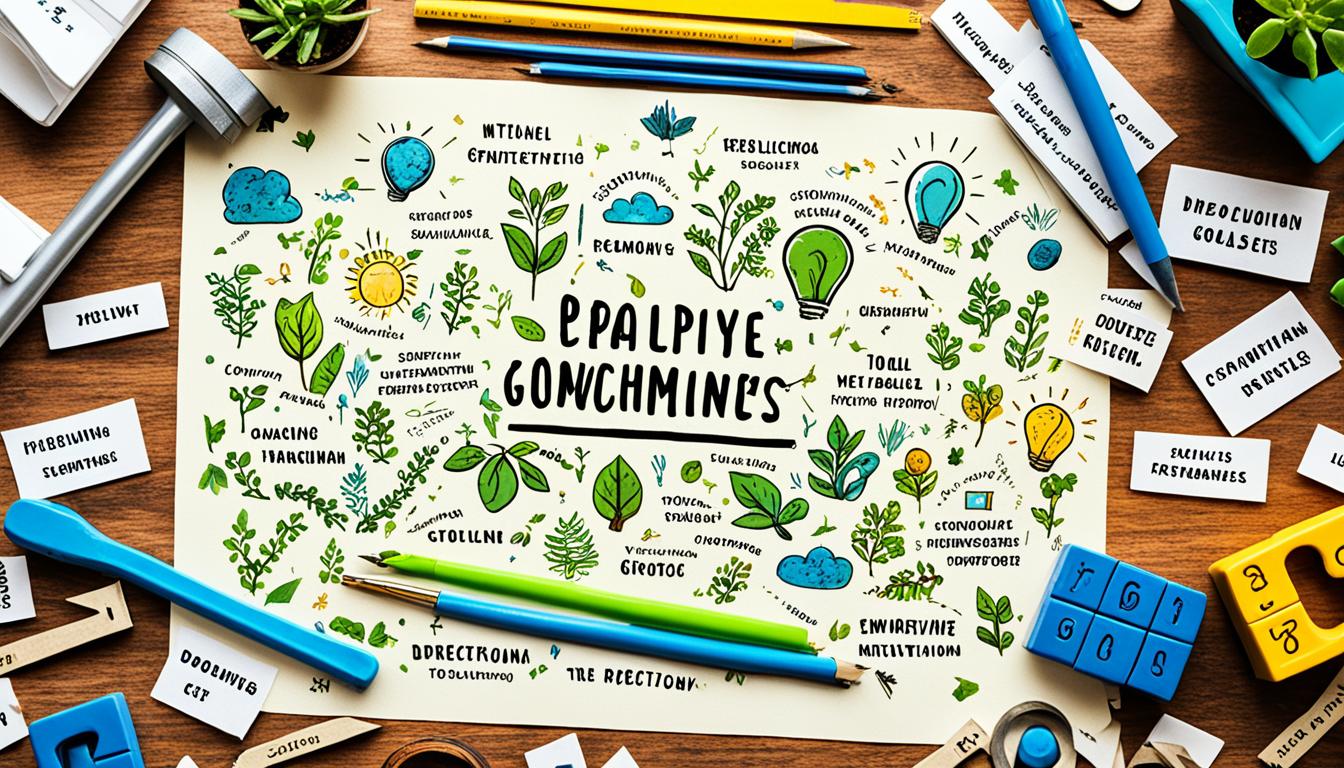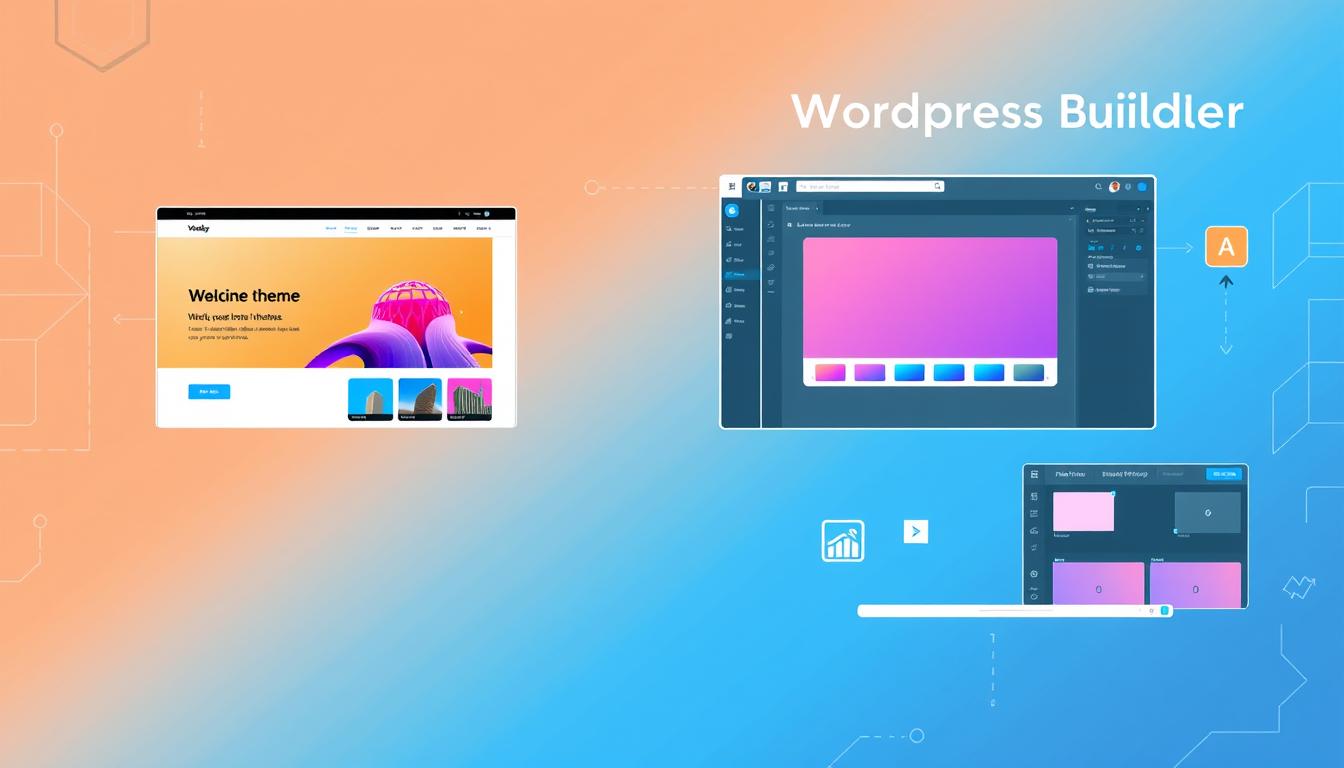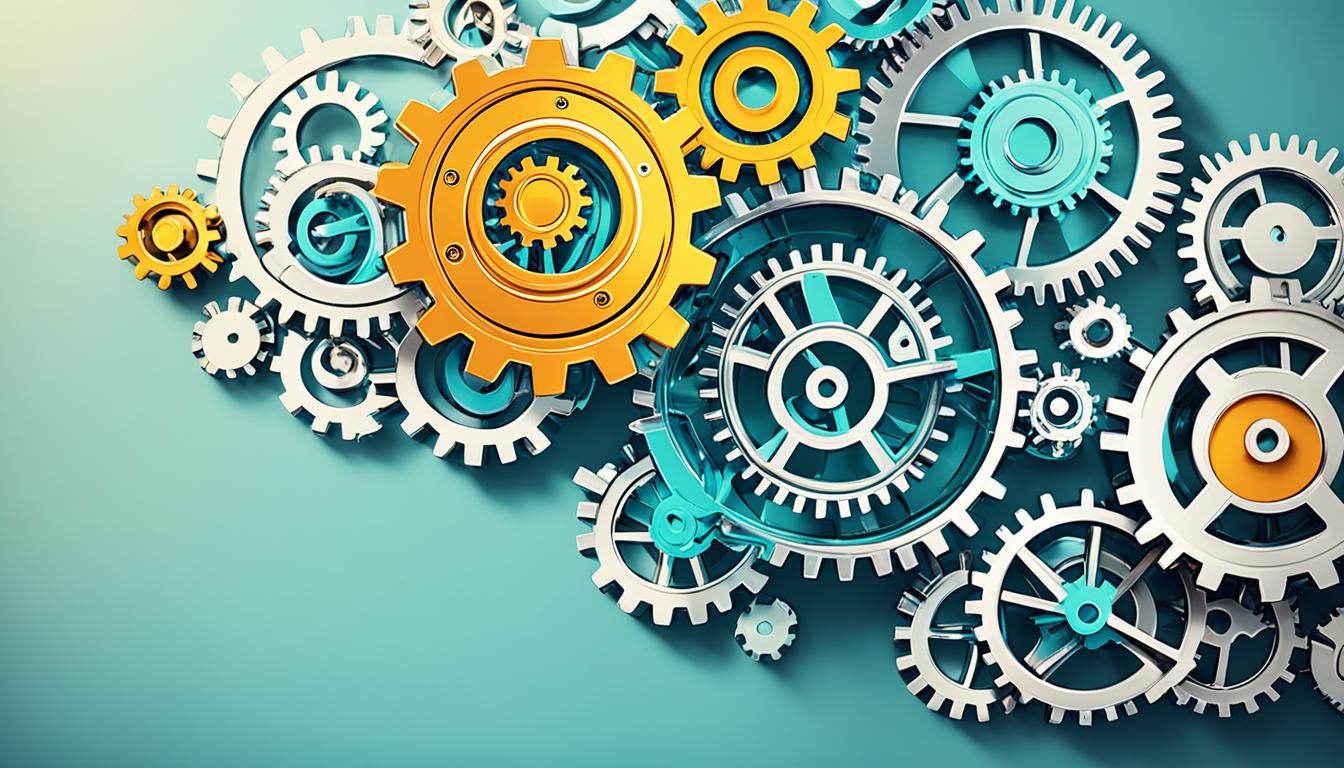Do you know a growth mindset can really boost your motivation, resilience, and success? People with this mindset think they can improve with hard work. Those stuck in a fixed mindset believe their skills are set, not changeable.
Getting a growth mindset is key for personal and work growth. It’s all about thinking positively, aiming for self-growth, and seeing challenges as chances to become better. By changing your mindset, you open the door to reaching your full potential and more success.
Key Takeaways:
- Choosing a growth mindset can enhance your motivation, resilience, and success.
- Unlike folks with fixed mindsets, those with a growth mindset see potential in themselves that can develop with hard work.
- It means being positive, wanting to grow, and finding opportunities in challenges.
- By doing this, you can tap into your full ability and find more success.
Understanding Mindsets: Fixed vs. Growth Mindset
A fixed mindset means believing that your skills are set and won’t change much. People with a fixed mindset often avoid challenges and are scared to fail. They might even give up easily. Unfortunately, this can hold them back from growing both personally and in their careers. This is because they’re not open to taking risks and learning from mistakes. On the other hand, a growth mindset is all about the idea that you can improve your skills by working hard and learning. People with this mindset love a good challenge. They see failure as a chance to learn and don’t give up easily when things get tough.
The kind of mindset you have is super important for how you get motivated and accomplish things. If you have a growth mindset, you’re excited about tough goals. You see them as chances to get better and grow. You’re also better at bouncing back from failures and using them to learn. But if you have a fixed mindset, you might not be as excited about goals. This is because you think you can’t get better anyway. So, you’re less likely to improve or keep going when things get hard.
“The only way to reach our full potential is by embracing a growth mindset and continuously challenging ourselves.”
Studies have found that your mindset can affect both how hard you try and how well you do. People with a growth mindset tend to put in more effort, look for feedback, and keep trying even when it’s tough. This usually leads to doing better overall. These folks know they can get better with practice and learning. But if someone sticks with a fixed mindset, they might be holding themselves back. They avoid hard things and just want to look good, instead of trying to get better.
When we know about fixed and growth mindsets, we can choose to develop a growth one to reach our full potential. It involves taking on challenges, seeing failures as ways to learn, and valuing hard work. With a growth mindset, we tackle problems, meet our goals, and keep getting better as we go through life.
Benefits of a Growth Mindset
A growth mindset doesn’t just help with being motivated and achieving things:
- It helps you be tougher by letting you bounce back from tough times and see problems as chances to get better.
- You’re more likely to get through changes well and learn new things. This is because you’re open to growing your skills throughout your life.
- A growth mindset makes you good at solving problems. You believe you can learn anything and do better by facing challenges head-on.
- You always want to learn and grow. This makes you keep wanting to learn new things and improve yourself as time goes on.
- It can help you do great things and be more happy and satisfied. This is because you’re always looking for ways to challenge yourself and get better.
Tools for Developing a Growth Mindset
Developing a growth mindset is a journey that changes how you see things. It needs you to be dedicated. You use different tools to help change your view, become stronger, and think more about growing. Let’s look at some awesome tools and resources for this:
- Mindfulness: Being mindful means less stress, better focus, and more energy. Methods like meditation and deep breathing make you live in the moment. This helps face challenges calmly and clearly.
- The Circle of Control: Knowing what you can control is key to growing your mindset. It lets you focus on what’s important. This helps tackle problems with a positive and sure mindset.
- The Third Space: Moving between tasks can be hard. Creating a “third space” means pausing and resetting before the next task. This keeps your mind clear and focused.
- The Power of Passion and Perseverance: It’s important to stay passionate and keep going, even when things are tough. This helps you put in effort, stay dedicated, and push past challenges. It shows the value of not giving up and loving to grow personally.
- The Concept of Emotional Bank Account and Trust: Trust in relationships is good for personal growth. The emotional bank account idea says trust is like “currency.” By building real connections and caring for others, you grow trust. This makes a supportive place for a growth mindset.
These tools and ideas give steps for building a growth mindset. They help you face problems with strength, dedication, and a focus on getting better. Adding these to your life opens up your abilities. It helps you succeed more in everything you do.

Carol Dweck’s Research on Growth Mindset
Psychologist Carol Dweck explored the idea of a growth mindset. She found that believing in growth is key to success. This is more important than just being naturally gifted or smart. Her work shows why working hard and not giving up matter a lot.
Dweck taught us that our skills and smarts can grow. By putting in effort, we can get better at things. She changed how we think about getting good at stuff. It’s all about trying hard and not giving up.
“It is not that I’m so smart, it’s just that I stay with problems longer.” – Albert Einstein
Grit and sticking with it are really important, Dweck says. Grit means having a strong love for something and sticking with it even when it gets hard. It matches her idea of the growth mindset well. Both are about not stopping until you reach your goals.
Having a growth mindset can change your life. It can help you at school or work. This way of thinking allows you to do more than you ever thought you could. It’s all about working hard and never giving up.
Image related to Carol Dweck’s research on growth mindset:
How to Cultivate a Growth Mindset
Switching to a growth mindset takes work and reflection. This journey can transform you both personally and professionally. Let’s look at some ways to develop a growth mindset.
- Understanding the fixed mindset: First, see the downside of a fixed mindset. This is the belief that your skills are set and can’t change much.
- Welcoming challenges: See challenges as chances to learn and grow. Trying new things helps you gain skills and see the world differently.
- Redefining failure as a learning experience: Change how you see failure. It’s not a step back but a way to learn and get better.
- Recognizing the value of effort: Realize that working hard is key to growing. Know that effort and sticking with things lead to getting better.
- Fostering a desire for continuous learning: Love learning and stay curious. Be open to new things and ways to better yourself.
- Embracing persistence: Get good at bouncing back and keep trying. Know that with hard work, you can overcome any obstacle.
- Seeking and appreciating constructive feedback: Look for feedback to help you grow. Welcome advice that makes you better at what you do.
- Surrounding oneself with growth-minded individuals: Spend time with people aiming for personal growth. Being with positive people can help you keep a positive attitude.
Developing a growth mindset is never-ending. By using these methods, you learn to love challenges, see failure as a lesson, and aim for constant improvement. Over time, you will reach your full potential and grow in all areas of life.
The Benefits of a Growth Mindset
Adopting a growth mindset has many pluses in both personal and work spheres. It helps people build skills like bouncing back, being flexible, and solving problems. Instead of seeing tough times as roadblocks, these folks spot chances to get better.
Maintaining a positive view on failure is another upside. Instead of getting down when things don’t go right, they move forward, knowing each stumble is a chance to advance. They take failures as lessons on the road to success.
Having a growth mindset means always wanting to learn more and do better. It pushes people to tackle new obstacles and gather information, always growing their know-how. This quest for knowledge keeps them ahead in a fast-changing world.
For tasks in life or work, having a growth mindset can up your success and joy. The skills you learn, like how to be strong in tough times, help you succeed and hit your targets. This not only boosts your confidence but also fills you with happiness and a sense of making progress.
Seeing challenges as chances, having a good view on failure, wanting to learn more, and being strong when faced with struggles can help you reach your highest potential. It lets you do great things and feel deeply content both personally and professionally.
Conclusion
Cultivating a growth mindset is key for both personal and professional growth. Understanding how our mindset affects what we do and how we do it is crucial. By learning how to develop a growth mindset, we can make huge strides towards reaching our goals.
With the right mindset and some tools, we can grow and succeed. It’s all about making an effort. By working on our mindset, we move closer to realizing our potential. This helps us in every part of our lives.
When we face challenges, we can see them as chances to learn. It’s also great to have friends who think the same way we do. Surrounding ourselves with such people can make a big difference. By taking control of our growth and using what we’ve learned, success is within our reach.
FAQ
What is the difference between a fixed mindset and a growth mindset?
A fixed mindset believes you can’t change your abilities much. A growth mindset sees potential in learning and effort.
What tools can help me develop a growth mindset?
Tools for a growth mindset include mindfulness and focusing on what you can control. They also consist of methods like the Third Space and building passion and trust.
What is Carol Dweck’s research on growth mindset?
Carol Dweck, known for her psychology work, researched growth mindset. She found it’s more impactful for success than just talent or intelligence.
How can I cultivate a growth mindset?
To adopt a growth mindset, learn about the fixed mindset first. Then, welcome challenges and see failures as stepping stones. Recognize the value in putting in effort and aim to keep learning.
Encourage yourself to persist, seek feedback, and be around those with a growth mindset. These steps are crucial in fostering a growth-oriented mindset.
What are the benefits of having a growth mindset?
A growth mindset brings strengths like resilience and problem-solving. It shapes how you see failure. You’ll strive to learn more and do better, which can boost success and happiness.
How can developing a growth mindset empower me personally and professionally?
By embracing a growth mindset, you get the power to reach your true potential. It helps in both personal growth and career success. You’ll see challenges as paths for growth and work on constant self-improvement.








